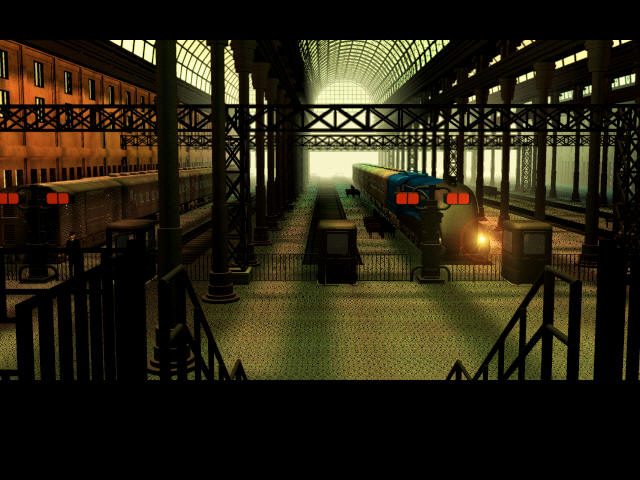
I'm going to start by stating that I am in no way a fan of first-person shooters. In fact, I can count the ones I like with just one hand: Half-Life 2, Prey, Breakdown and now Far Cry 2. What I think these games have in common though is that they definitely transcend a lot of the stigmatic barriers of this ill-genre although, with the exception of Breakdown, they're still far too rooted in them to reach their true potential.
Such is the case with Far Cry 2. From the get go, you're dropped into a vast unnamed african country, divided into two areas. Like most FPS the story is non-essential, which is a great miss considering the incredible potential it had. You're main goal from the start is to assassinate The Jackal, a take on legendary weapons dealer Viktor Bout, as you take missions for both opposing factions UFLL and APR which, just like real-life militias, all look the same. The supporting cast is thus far and wide forgettable, a huge miss considering the fairly interesting range of characters movies with similar backgrounds like Hotel Rwanda, Last King of Scotland or Blood Diamond have produced.
You are commissioned your story missions in towns which are another miss as they're totally FPS-like. While there's talk of "the people" and "refugees" and stuff, during the entire game, you only see soldiers, taking a big amount of realism out of it, as for instance more interaction with villagers, drivers, women and children would surely give a lot more emphasis on the dramatic action. Like all FPS, interaction is nearly limited to gunfire.
All this would be unbearable if it didn't have some redeeming factors. The big star is the environment. I was very excited when Resident Evil 5 was unveiled as being in Africa as this continent has such great potential that is seldom used in art, and more so in video games; i was then very disappointed when I saw the final result. In Far Cry 2 however things are different.
One of the criticisms the media pointed were the long treks you had to consistently make to get to your target missions, as well as the overall length of the game (it takes seriously more than 30 hours, huge for an FPS). I myself revelled in it. In fact, it's where my comfort with this game comes from.
Although mission objectives are relatively strict, you can execute them to your liking. If you wanted you could take days preparing a mission, deciding on what equipment to take, deciding your approach, placing getaway vehicles, planning the hour of the day of your attack...
This is aided a lot by the excellent dynamic GPS and map system, allowing you to pursue paths less travelled, reach for higher grounds for scoping and just essentially to get by, as you'd feel very much lost without them.
There's a reasonable network of roads and vehicles (including gliders and boats) you can take as well, but sticking to them is detrimental to the experience: refreshingly, this is an FPS where you can explore a beautiful, lush, dynamic reactive environment with great delight.
Apart from the fixed gun set in front of you all the time which really aggravated me (it's part of that country-with-no-people-just-soldiers thing), the first person perspective is quite dynamic and enthralling. Coupled with the silent protagonist, you get a real sense of presence in the world, even if for the smallest glimpse, and that makes it very special.
The special effects department is a beacon of excellence, with fire effects simply astounding. It develops very realistically through all flammable contents and is just a delightful eye-candy. The one set-back is that it puts itself out and very quickly at times (no more than 2 minutes)...
Fortunately it's not just fire that shines. The light and dark routines are excellent (aided by a full 24hour system), with sun effects really top notch. Let me tell you, it's really something to watch a sunrise or sunset just as you wake up in the middle of a forest hill. The storms that punctuate the game at times are also incredible, trees shake everywhere, rain pours, I wish they had gone the extra mile and put up puddles and mud development as well...
An ingenious piece of design is that you're never really in control, a harsh difference from common "action-hero" type of FPS. Guns jam and even blow up in your hands (right when you were gonna take that crucial sniping shot, hehe), cars break down, you get malaria attacks periodically, and even the environment can work against you (since there's no HUD it's sometimes really hard to see who's hitting you at night; although the same applies to the enemy).
Sound is amazing, from the environment sounds to a great soundtrack that keeps you on the edge just as you try to sneak through the long grass outside an enemy post.
Final words: while it's still an FPS, I feel that games like this and Prey really try to push forward the genre, making it feel more dynamic and alive. It's a shame that it got a little stuck halfway. Still it's an incredibly enjoyable ride, very entertaining, and especially atmospheric.
Originally published February 17, 2010









